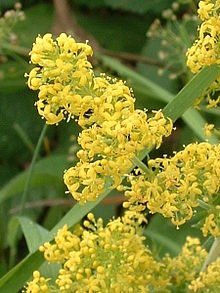Downland

Downland, chalkland, chalk downs or just downs are areas of open chalk hills, such as the North Downs. This term is used to describe the characteristic landscape in southern England where chalk is exposed at the surface.[1] The name "downs" is derived from the Old English word dun, meaning "hill".[2]
Distribution

The largest area of downland in southern England is formed by
Geology
The Chalk Group is a sequence of
Since its deposition, the chalk in southern England has been uplifted,
Formation

Downland develops when chalk rock becomes exposed at the surface. The chalk slowly erodes to form characteristic rolling hills and valleys. As the Cretaceous chalk layer in southern England is typically tilted, chalk downland hills often have a marked scarp slope on one side, which is very steep, and a much gentler dip slope on the other. Where the downs meet the sea, characteristic white chalk cliffs form, such as the White Cliffs of Dover and Beachy Head.[1]
Hydrology
Chalk deposits are generally very permeable, so the height of the water table in chalk hills rises in winter and falls in summer.[4] This leads to characteristic chalk downland features such as dry valleys or coombes, and seasonally-flowing streams or winterbournes. The practice of extracting water from this aquifer, in order to satisfy the increasing demand for water, may be putting some of these streams under stress.
In the valleys below the downs at the base of the chalk layer, greensand or gault clay comes to the surface and at the interface at the top of the gault a
Soil
The
Steep slopes on chalk downland develop a ribbed pattern of grass covered horizontal steps a foot or two high. Although subsequently emphasised by cattle and sheep walking along them, these
Habitat

The dominant habitat in chalk downland is typically
See also
References
- ^ ISBN 9780198606192.
- ^ "down". Online Etymology Dictionary. Retrieved 9 October 2020.
- ISBN 9780632017331.
- ^ S2CID 140713528.
- .
- ISBN 9780521310161.
- ^ South Downs National Park Authority (2020). "Down to earth – the unique soil of the South Downs National Park". Retrieved 10 October 2020.
